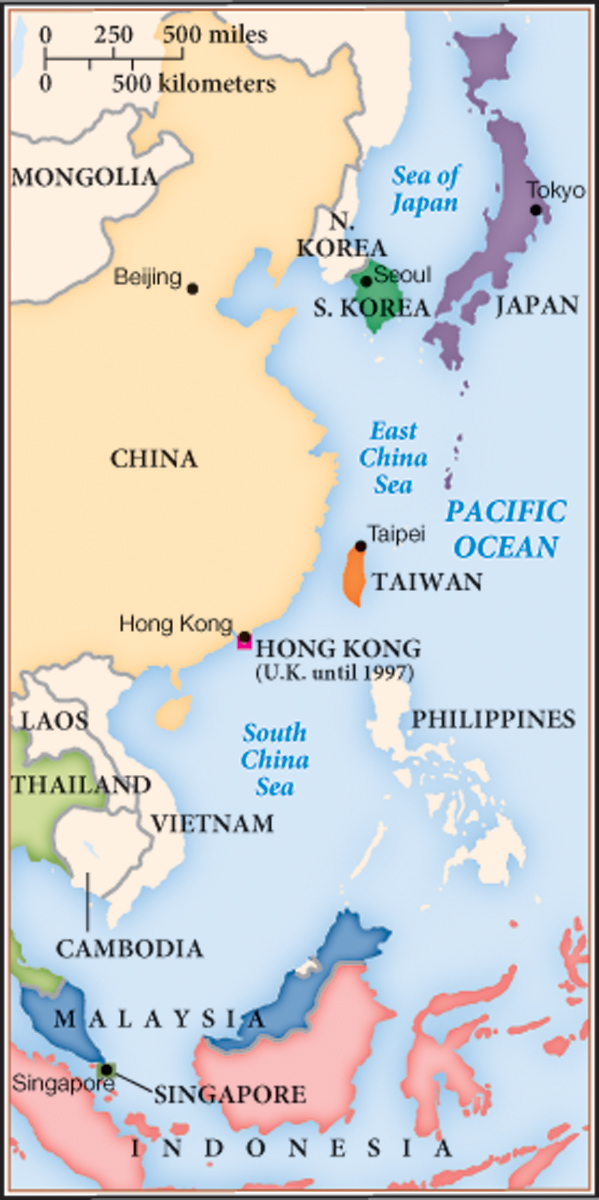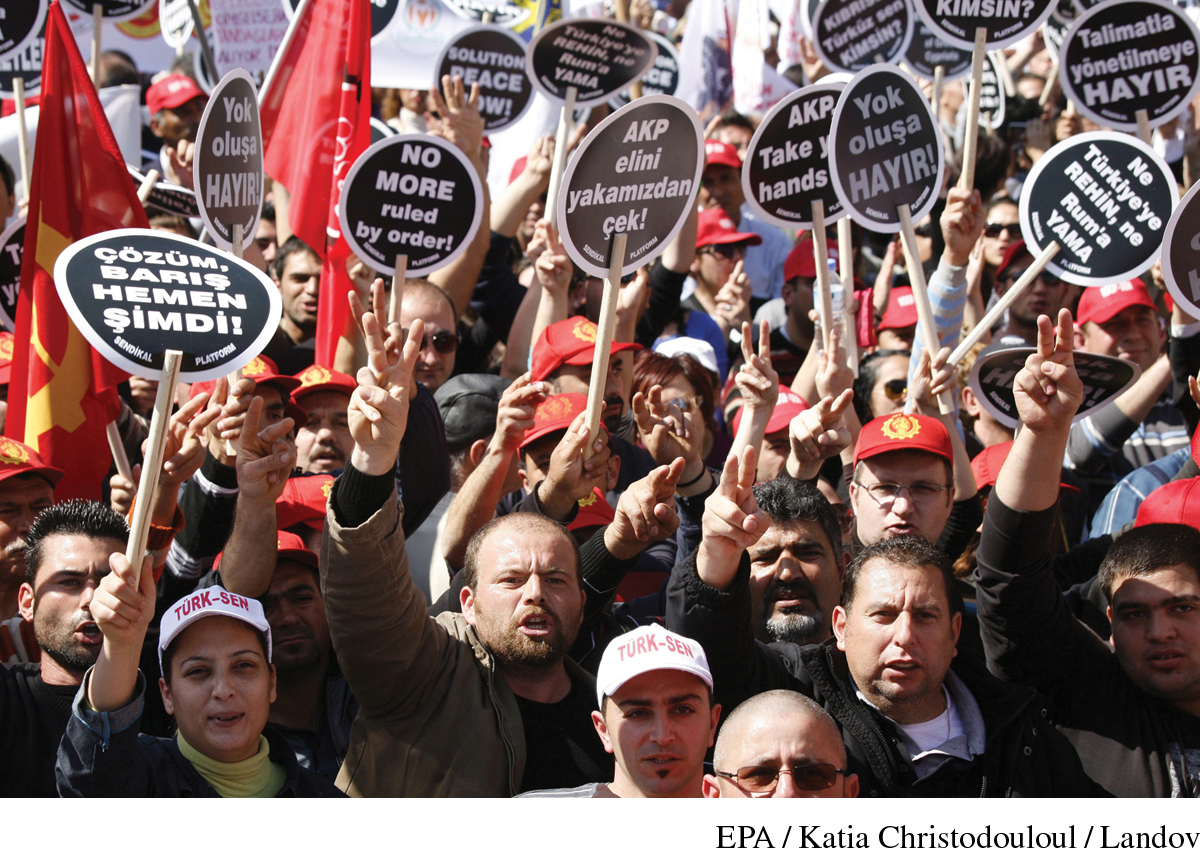The Promise and Problems of a World Economy
Printed Page 993
Important EventsThe Promise and Problems of a World Economy
Amid the violence, an incredible rise in industrial entrepreneurship and technological development took place outside the West. In 1982, the Asian-Pacific nations accounted for 16.4 percent of global gross domestic product, a figure that had doubled since the 1960s. By 1989, East Asia’s share of world production had grown to more than 25 percent as that of the West declined. By 2006, China alone was achieving economic growth rates of more than 10 percent per year, and in 2010 it overtook Japan as the second largest national economy after the United States, with Germany falling to fourth place.

South Korea, Taiwan, Singapore, and Hong Kong were popularly called Pacific tigers for the ferocity of their growth in the 1980s and 1990s. By the 1990s, China, pursuing a policy of economic modernization and market orientation, had surpassed all the others. Japan, however, led the initial charge of Asian economies with investment in high-tech consumer industries driving the Japanese economy. For example, in 1982, Japan had thirty-two thousand industrial robots in operation; western Europe employed only nine thousand, and the United States had seven thousand. In 1989, the Japanese government and private businesses invested $549 billion to modernize industrial capacity, a full $36 billion more than in the United States. As buyers around the world snapped up automobiles, televisions, videocassette recorders, and computers from Asian-Pacific companies, the United States poured vast sums into its wars and Asian and Middle Eastern governments financed America’s ballooning national debt. By 2000, China had become the largest creditor of the United States.
Despite rising national prosperity, individual workers, particularly outside of Japan, often paid dearly for this newly created wealth. For example, safety standards and working conditions in China were abominable, leading to horrendous mining disasters and suicides among workers. Women in the Asia Pacific region and Central America labored in sweatshops to produce clothing for U.S.- and Euroupean-based companies. Using the lure of a low-paid and presumably docile female workforce, governments were able to attract electronics and other industries. At the same time, educational standards rose, along with access to birth control and other medical care for these women, and many valued the escape from rural poverty.
Other emerging economies in the Southern Hemisphere continued to increase their share of the world’s gross domestic product over the past four decades, and some achieved political gains as well. In South Africa, native peoples began winning the struggle for political rights when, in 1990, the moderate government of F. W. de Klerk released political leader Nelson Mandela, imprisoned for almost three decades because of his antiapartheid activism. After holding free elections in 1994, which Mandela won, South Africa—like Brazil, Russia, Iran, Saudi Arabia, Nigeria, and Chile—profited from the need for vast quantities of raw materials such as oil and ores to feed global expansion. India made strides in education and women’s rights and calmed bitter local rivalries, but the assassination of two successive Indian prime ministers in 1984 and 1991 raised the question of whether India would be able to attract investment and thus continue modernization. India’s economy achieved soaring if unsustained growth early in the twenty-first century, taking business from Western firms and making global acquisitions that gave it, for example, the world’s largest steel industry.
There was a downside to global economic interconnectedness. Beginning in 1997, when speculators brought down the Thai baht, and continuing with the collapse of the Russian ruble in 1998 and the bursting of the technology bubble in the early 2000s, the global economy suffered a series of shocks. In 2008, the real estate bubble burst in the United States, setting in motion a financial crisis of enormous proportions. For several years, lenders had been making home mortgages available to U.S. consumers who could not afford them. The boom in housing made the economy as a whole look robust. Bankers then sold their bad housing debt around the world to those who hoped to make handsome profits based on rate increases written into the mortgage contracts. When people were unable to make their monthly mortgage payments and pay their credit card debt, a global credit collapse followed, just as it had in the stock market crash of 1929. Beginning in the United States and continuing around the world, banks and industries became insolvent, forcing governments to set common policies to prop up failing banks with billions of dollars, which in turn added to government debt. Unemployment rose as businesses and consumers alike stopped purchasing goods.

REVIEW QUESTION What were the principal challenges facing the West at the beginning of the twenty-first century?
Five years later, the U.S. economy had improved because of unprecedented government intervention even as European nations faced threats of insolvency and unacceptable levels of unemployment—more than 20 percent in Spain. It looked to some as though the EU itself might collapse due to the stubborn downturn. The globalization of economic crises was another of the perils faced by the world’s population.